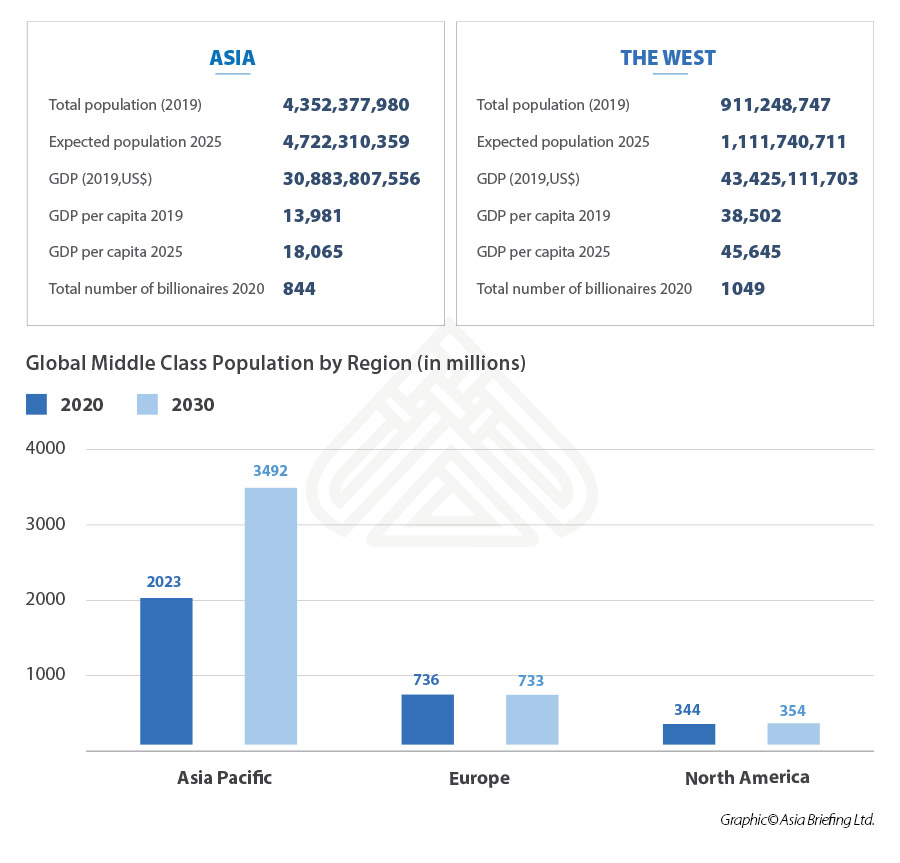“It’s About the Brown Man, And the Yellow Man, And the White Man Is on the Way Out.” Asia Versus the West

Op/Ed by Chris Devonshire-Ellis
That crudely put, yet arresting headline is a quote from ‘The White Tiger‘ a new film from about how the Asian working class is fighting its way up to a dominant global position, especially in India. Based on the Booker Prize winning novel by Aravind Adiga, it’s premise is unusual, in that an up and coming young Dalit (untouchable), the irrepressible Balram Halwai, views China’s Wen Jiabao, the Prime Minister at the time as symbolizing the future direction that India and Asia will take.
In fact, in India today, while the media constantly ‘bash’ China (and Pakistan) many young Indians and politicians secretly admire the Chinese ability to get things done. As a senior member of India’s Parliament told me recently, “I wish I could get things done as easily as the Chinese can.”
While the film is slightly akin to Slumdog Millionaire in its rags to riches story, the theme is different. This time, the rags to riches are not gained through intellect and love, but through increasing awareness, desperation, and violence. That line, about ‘The white man is on the way out’ is a referral both forwards and backwards. It looks backwards to the exit of the British from India at independence, and it looks forward to a resurgent Asia, with India and China at its core, taking the tiger’s share of the global economy and future wealth. In some respects, it is a warning of things still to pass. But how realistic is it?
I asked Dezan Shira & Associates wonderful Asian economic research team to come up with some figures comparing East and West.
To do that, we assumed the following countries as part of Asia:
China (including Hong Kong, Macau & Taiwan), Japan, South Korea, Mongolia, Afghanistan, Bhutan, India, Maldives, Nepal, Pakistan, Sri Lanka, Brunei, East Timor, Cambodia, Indonesia, Laos, Malaysia, Myanmar, North Korea, Philippines, Singapore, Thailand, Vietnam, Kazakhstan, Kyrgyzstan, Tajikistan, Turkmenistan, Uzbekistan, and the Russian Far East.
We then compared these as an Asian bloc with ‘the West’ in which we included:
Austria, Belgium, Bulgaria, Croatia, Cyprus, Czech Republic, Denmark, Estonia, Finland, France, Germany, Greece, Hungary, Ireland, Italy, Latvia, Lithuania, Luxembourg, Malta, Netherlands, Romania, Slovakia, Slovenia, Spain, Sweden, Poland, Portugal, Norway, Iceland, Australia, New Zealand, United Kingdom, Canada and the United States.
This is what they found:

The rise of Asian wealth overall is held back by still significantly fewer wealthy countries when compared to the West. None of the Western nations can be considered poor, whereas the Asian region has numerous countries with low income in addition to a far larger population – there are 4.5 Asians for every 1 Western citizen. The West will hold onto its wealth as a concentrated area with significant value.
Balram Halwai then, proclaiming the ‘White man is on the way out’ though has come across a trend. If we strip out the Asian laggards and concentrate on the top ten economies of Asia, we find that these, compared with the top ten economies of the West, are fast catching up. On a per capita basis, the wealth of Asians by 2025 compared to the West then becomes:
Asia US$45,976
West US$63,615
This is a significant narrowing of the gap; however, it should be noted that the Asian figures are still held back by the far larger population. Where the reality of what is happening really starts to show though is in the explosion of the middle-class population across Asia – by 2030 Asia will have a consumer class base of nearly 3.5 billion, from a population of 4.7 billion, compared to a middle class consumer class of just over 1 billion in the West.
For every middle-class consumer product bought in the West, Asia will buy 3.5.
The White man may not be ‘on the way out’ as Balram Halwai suggests, but he is going to be a manufacturing and services base to supply Asia. And that in part, is the crux of what he is referring to. Halwai ultimately changes his name and adopts the persona of a boss, instead of being a driver, he owns a taxi company. Now in charge, he can dictate what he wants. The question is, with the old adage that ‘The Customer is King’ in mind, is how Western executives will feel about being told what to do by Asian consumers. And that is an attitude that may require some adjusting.
As we saw in Xi Jinping’s address earlier this week to the Central & Eastern European Countries (CEEC), China has a need to purchase US$170 billions of identified products from those nations alone in the next five years. He is asking the region for supplies, and that means export opportunities. Yet Halwai may yet be right, unless ‘the White man’ can get his act together, those opportunities could be lost. It is time for the West to lose some attitudes, loosen up, and research where the consumer markets are developing. The faster growth opportunities are in Asia, and that is where the characters admittedly harshly put words, ring true.
Related Reading
About Us
Silk Road Briefing is written by Dezan Shira & Associates. The firm has 28 offices throughout Asia, and assists foreign investors into the region. For strategic advisory and business intelligence issues please contact the firm at silkroad@dezshira.com or visit www.dezshira.com





